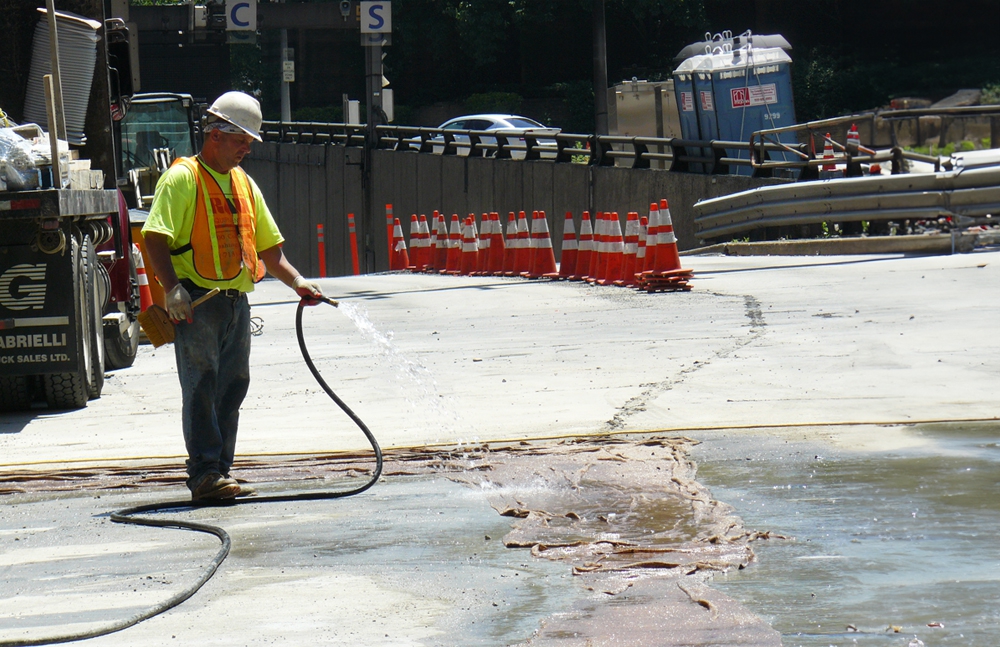
The Inflation Reduction Act of 2022 represents the federal government’s single largest investment toward reducing U.S. greenhouse gas (GHG) emissions. To that end, the U.S. Environmental Protection Agency, U.S. Department of Transportation, and U.S. General Services Administration are setting global warming potential (GWP) limits for four construction materials – asphalt, concrete, glass, and steel – used in federally funded projects.
The U.S. EPA defines GWP as “a measure of how much energy the emissions of 1 ton of a gas will absorb over a given period of time, relative to the emissions of 1 ton of carbon dioxide (CO2).” It is expressed in kilograms of carbon dioxide equivalent (kg CO2-eq) because carbon dioxide is not the only greenhouse gas. Methane and nitrous oxide are also GHGs and manufacturing cement generates all three. The formula for calculating CO2-eq translates all these emissions into one GWP number we can all work with.
GWP is one of several metrics reported in a Type III environmental product declaration (EPD). The EPD for a concrete mix reports GWP in cubic meters as kg CO2-eq/m3. A cement EPD reports GWP in metric tons as kg CO2-eq/t (see the third line of first table in this example). The declared units are different because concrete is typically measured in volumes (cubic meters), while cement is measured by mass (in kilograms and metric tonnes). EPD figures are reported using International System of Units (SI) rather than the imperial system used in the United States because the EPD development process is based on an International Organization for Standardization (ISO) standard.
The EPD is the foundation of the government’s efforts to craft protocol for evaluating a material’s environmental impact, and will be a key tool for specifiers. Here is a brief explanation of the different types.
The evolving federal requirements for concrete are based on industry-average, or industry-wide, EPDs developed by trade groups like the Portland Cement Association (PCA) and National Ready Mixed Concrete Association (NRMCA). They are the benchmarks against which specific concrete mixes will be evaluated. Funding applicants will be required to submit a product-specific Type III (third-party-verified) EPD for a concrete mix that addresses the environmental impacts of the cement/s, aggregates, and admixtures. If a Type III EPD is not available, a product-specific Type III (third-party-verified) cement EPD may be used to estimate concrete GWP.
With all that as an introduction, here are three key cement GWPs:
Ordinary portland cement (OPC): 922 kg (per PCA industry-average EPD)
Portland limestone cement (PLC/Type 1L): 846 kg (also per PCA)
Rapid Set® Cement: 673 kg (per product-specific Type III (third-party-verified) EPD)
Manufacturing: Rapid Set® vs. OPC and PLC
Ultimately, the federal government wants funding recipients to use construction materials that generate lower emissions throughout the entire life cycle, which includes use and disposal. However, because developing appropriate GWP requirements for a ubiquitous material like concrete – the second-most-used material on the planet after water – is a years-long process involving industry input and pilot projects, it is first concentrating on emissions generated only during manufacturing.
Two processes generate most of the emissions released by a cement plant: calcination and combustion. Calcination is the reaction that occurs at high temperatures in the kiln, changing limestone into lime and carbon dioxide (CO2). This generates roughly half of a portland cement plant’s emissions. Combustion is the burning of fuels to heat the kiln to a temperature high enough to initiate calcination, and generates roughly 40% of the plant’s emissions.
Rapid Set® is not portland cement. It contains most of the same mineral components, but in different proportions. For example, it contains 20% less limestone per ton of clinker, reducing the amount of CO2 released in calcination. In addition, Rapid Set® replaces alite (tricalcium silicate, or C3S in cement chemist notation), which promotes early strength gain, with calcium sulfoaluminate (CSA). The temperature required to produce is 300 degrees to 480 degrees Fahrenheit lower than portland cement’s. That lowers combustion requirements, which produces less exhaust by burning less fuel.
This is why Rapid Set® Cement’s GWP is 27% lower than OPC’s and 20% lower than PLC’s.
Life Cycle Impacts: Rapid Set® vs. OPC and PLC
Portland and CSA cements also differ in terms of long-term environmental impact.
Cement accounts for approximately 85% of a concrete mix’s GWP. OPC concrete and PLC concrete typically require more cement per cubic yard than Rapid Set® to achieve the same design strength.
They also take days rather than hours to achieve structural strength. Being able to reopen roads and bridges to traffic on the same day is why transportation departments that need to make fast repairs use Rapid Set®, which generally reaches 4500 psi compressive strength in less than two hours and 6500 psi in seven days.
For more background on how the federal government is approaching the issue of construction material emissions, request a free recording of my webinar: Rapid Set Concrete's Role in Low Carbon Concrete. Click here to request Rapid Set®’s product-specific Type III (third-party-verified) EPD.
You can also follow me here.